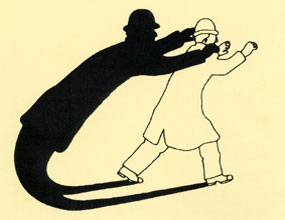
While surfing across the Internet, I came across this article that I thought might be of interest to health conscious coffee drinking bloggers. However, I am by no means advocating the use of coffee as a performance enhancing beverage. Nor do any of the ideas expressed about the properties of coffee necessarily reflect my own personal or professional views on the subject. It is entirely up to the reader to draw their own conclusions from the following reprint.
Plenty of health benefits are brewing in America's beloved beverage, coffee.
By Sid Kirchheimer
WebMD Feature Reviewed By Brunilda Nazario, MD
on Monday, January 26, 2004
Want a drug that could lower your risk of diabetes, Parkinson's disease, and colon cancer? That could lift your mood and treat headaches? That could lower your risk of cavities?
If it sounds too good to be true, think again.
Coffee, the much maligned but undoubtedly beloved beverage, just made headlines for possibly cutting the risk of the latest disease epidemic, type 2 diabetes. And the real news seems to be that the more you drink, the better.
Reducing Disease Risk
After analyzing data on 126,000 people for as long as 18 years, Harvard researchers calculate that compared with not partaking in America's favorite morning drink, downing one to three cups of caffeinated coffee daily can reduce diabetes risk by single digits. But having six cups or more each day slashed men's risk by 54% and women's by 30% over java avoiders.
Though the scientists give the customary "more research is needed" before they recommend you do overtime at Starbuck's to specifically prevent diabetes, their findings, reported just two weeks ago, are very similar to those in a less-publicized Dutch study last year. And perhaps more importantly, it's the latest of hundreds of studies suggesting that coffee may be something of a health food -- especially in higher amounts.
In recent decades, some 19,000 studies have been done examining coffee's impact on health. And for the most part, their results are as pleasing as a gulp of freshly brewed Breakfast Blend for the 108 million Americans who routinely enjoy this traditionally morning -- and increasingly daylong -- ritual. In practical terms, regular coffee drinkers include the majority of U.S. adults and a growing number of children.
"Overall, the research shows that coffee is far more healthful than it is harmful," says Tomas DePaulis, PhD, research scientist at Vanderbilt University's Institute for Coffee Studies, which conducts its own medical research and tracks coffee studies from around the world. "For most people, very little bad comes from drinking it, but a lot of good."
Consider this: At least six studies indicate that people who drink coffee on a regular basis are up to 80% less likely to develop Parkinson's, with three showing the more they drink, the lower the risk. Other research shows that compared to not drinking coffee, at least two cups daily can translate to a 25% reduced risk of colon cancer, an 80% drop in liver cirrhosis risk, and nearly half the risk of gallstones.
Coffee even offsets some of the damage caused by other vices, some research indicates. "People who smoke and are heavy drinkers have less heart disease and liver damage when they regularly consume large amounts of coffee compared to those who don't," says DePaulis.
There's also some evidence that coffee may help manage asthma and even control attacks when medication is unavailable, stop a headache, boost mood, and even prevent cavities.
The Benefits of Caffeine
Is it the caffeine? The oodles of antioxidants in coffee beans, some of which become especially potent during the roasting process? Even other mysterious properties that warrant this intensive study?
Actually, yes.
Some of coffee's reported benefits are a direct result of its higher caffeine content: An eight ounce cup of drip-brewed coffee contains about 85 mg -- about three and a half times more than the same serving of tea or cola or one ounce of chocolate.
"The evidence is very strong that regular coffee consumption reduces risk of Parkinson's disease and for that, it's directly related to caffeine," DePaulis tells WebMD. "In fact, Parkinson's drugs are now being developed that contain a derivative of caffeine based on this evidence."
Caffeine is also what helps in treating asthma and headaches. Though not widely publicized, a single dose of pain reliever such as Anacin or Excedrin contains up to 120 milligrams -- what's in a hefty mug o' Joe.
It’s also caffeine -- and not coffee, per se -- that makes java a powerful aid in enhancing athletic endurance and performance, says physiologist and longtime coffee researcher Terry Graham, PhD, of the University of Guelph in Canada. So powerful, in fact, that until recently, caffeine in coffee or other forms was deemed a “controlled” substance by the Olympic Games Committee, meaning that it could be consumed only in small, designated amounts by competing athletes.
“What caffeine likely does is stimulate the brain and nervous system to do things differently,” he tells WebMD. “That may include signaling you to ignore fatigue or recruit extra units of muscle for intense athletic performance. Caffeine may even have a direct effect on muscles themselves, causing them to produce a stronger contraction. But what’s amazing about it is that unlike some performance-enhancing manipulation some athletes do that are specific for strength or sprinting or endurance, studies show that caffeine positively enhances all of these things.”
In other words, consume enough caffeine -- whether it’s from coffee or another source -- and you will likely run faster, last longer and be stronger. What’s enough? As little as one cup can offer some benefit, but the real impact comes from at least two mugs, says Graham. By comparison, it’d take at least eight glasses of cola to get the same effect, which isn’t exactly conducive for running a marathon.
But the harder you exercise, the more benefit you may get from coffee. “Unfortunately, where you see the enhancing effects from caffeine is in hard-working athletes, who are able to work longer and somewhat harder,” says Graham, who has studied the effects of caffeine and coffee for nearly two decades. “If you a recreational athlete who is working out to reduce weight or just feel better, you’re not pushing yourself hard enough to get an athletic benefit from coffee or other caffeinated products.”
But you can get other others benefits from coffee that have nothing to do with caffeine. "Coffee is loaded with antioxidants, including a group of compounds called quinines that when administered to lab rats, increases their insulin sensitivity" he tells WebMD. This increased sensitivity improves the body's response to insulin.
That may explain why in that new Harvard study, those drinking decaf coffee but not tea beverages also showed a reduced diabetes risk, albeit it was half as much as those drinking caffeinated coffee.
"We don't know exactly why coffee is beneficial for diabetes," lead researcher Frank Hu, MD, tells WebMD. "It is possible that both caffeine and other compounds play important roles. Coffee has large amounts of antioxidants such as chlorogenic acid and tocopherols, and minerals such as magnesium. All these components have been shown to improve insulin sensitivity and glucose metabolism."
Meanwhile, Italian researchers credit another compound called trigonelline, which gives coffee its aroma and bitter taste, for having both antibacterial and anti-adhesive properties to help prevent dental cavities from forming. There are other theories for other conditions.
Children and Coffee
How does this brew affect growing minds and bodies? Very nicely, it seems, says DePaulis. Coffee, as you probably know, makes you more alert, which can boost concentration. But claims that it improves a child's academic performance can be exaggerated. Coffee-drinking kids may do better on school tests because they're more awake, but most task-to-task lab studies suggest that coffee doesn't really improve mental performance, says DePaulis.
But it helps kids' minds in another way. "There recently was a study from Brazil finding that children who drink coffee with milk each day are less likely to have depression than other children," he tells WebMD. "In fact, no studies show that coffee in reasonable amounts is in any way harmful to children."
On the flip side, it's clear that coffee isn't for everyone. Its legendary jolt in excess doses -- that is, more than whatever your individual body can tolerate -- can increase nervousness, hand trembling, and cause rapid heartbeat. Coffee may also raise cholesterol levels in some people and may contribute to artery clogging. But most recent large studies show no significant adverse affects on most healthy people, although pregnant women, heart patients, and those at risk for osteoporosis may still be advised to limit or avoid coffee.
The bottom line: "People who already drink a lot of coffee don't have to feel 'guilty' as long as coffee does not affect their daily life," says Hu. "They may actually benefit from coffee habits in the long-run."
Published Jan. 26, 2004.
--------------------------------------------------------------------------------
SOURCES: Tomas DePaulis, PhD, research scientist, Vanderbilt University's Institute for Coffee Studies; research assistant professor of psychiatry, Vanderbilt University Medical Center, Nashville. Terry Graham, PhD, University of Guelph, Canada. Frank Hu, MD, PhD, associate professor of nutrition and epidemiology, Harvard School of Public Health, Boston. Hu, F. Annals of Internal Medicine, January 2004; vol 140; pp 1-8. Benedetti MD, Neurology, July 12, 2000; vol 55; pp 1350-1358. Ross, G. The Journal of the American Medical Association, May 24, 2000; vol 283; pp 2674-2679. Gazzani, G. Journal of Agricultural and Food Chemistry, Feb. 27, 2000. Leitzmann, M. The Journal of the American Medical Association, June 9, 1999, vol 281; pp 2106-2122. Giovannucci, E. American Journal of Epidemiology, June 1, 1998; vol 147; pp 1043-1052. Pagano, R. Chest, August 1988; vol 94; pp 387-389.
--------------------------------------------------------------------------------
© 1996-2003 WebMD Inc. All rights reserved.
Original page: http://my.webmd.com/content/Article/80/96454.htm







 It's a hard knock life; just ask Hasim-Rahman pictured to the right after being punched to deformity. When you face-off inside the ring, a 1001 things can happen to you. Most of them are bad. The hand is faster than the eye, so it's inevitable that you will get hit. It's only a matter of how often, and how hard? I liken boxing to trying to dodge 5 lanes of busy traffic with your eyes closed. You just know there is a big Buick with your name on it. No matter how hard you prepare for your first sparring session, you'll end the match realizing that you still have a long way to go. On average it takes about 3 years before you become a smooth operator, but if you believe you've got what it takes and you're willing to work hard; time will pass quickly. For anyone who is aspiring to be a competitive boxer, here are some battle tested tips based on my personal experience as both a competitor and an instructor.
It's a hard knock life; just ask Hasim-Rahman pictured to the right after being punched to deformity. When you face-off inside the ring, a 1001 things can happen to you. Most of them are bad. The hand is faster than the eye, so it's inevitable that you will get hit. It's only a matter of how often, and how hard? I liken boxing to trying to dodge 5 lanes of busy traffic with your eyes closed. You just know there is a big Buick with your name on it. No matter how hard you prepare for your first sparring session, you'll end the match realizing that you still have a long way to go. On average it takes about 3 years before you become a smooth operator, but if you believe you've got what it takes and you're willing to work hard; time will pass quickly. For anyone who is aspiring to be a competitive boxer, here are some battle tested tips based on my personal experience as both a competitor and an instructor.
























